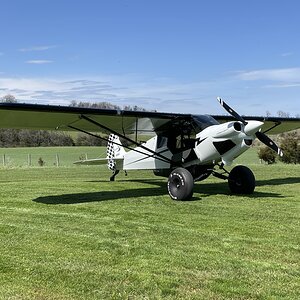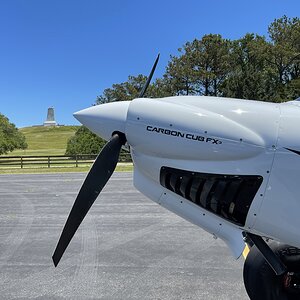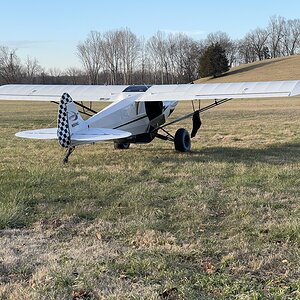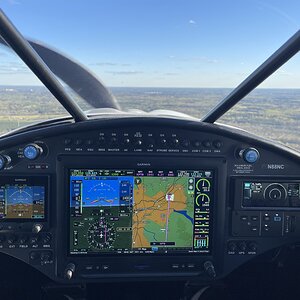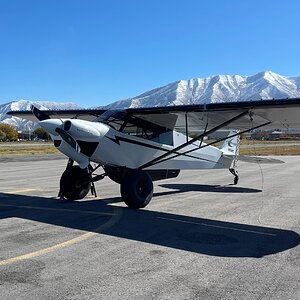Navigation
Install the app
How to install the app on iOS
Follow along with the video below to see how to install our site as a web app on your home screen.
Note: This feature may not be available in some browsers.
More options
Welcome to Flightinfo.com
- Register now and join the discussion
- Friendliest aviation Ccmmunity on the web
- Modern site for PC's, Phones, Tablets - no 3rd party apps required
- Ask questions, help others, promote aviation
- Share the passion for aviation
- Invite everyone to Flightinfo.com and let's have fun
You are using an out of date browser. It may not display this or other websites correctly.
You should upgrade or use an alternative browser.
You should upgrade or use an alternative browser.
GNS XLS Help
- Thread starter cart
- Start date
- Watchers 4
SpaceBall 1
Props are for boats
- Joined
- Aug 14, 2003
- Posts
- 158
It's been just over a year since I last used the XLS, but if memory serves me....
On your flight plan page, enter the name of the waypoint just prior to where the routes intersect that define the airway, but you have to put a star (*) at the end of the waypoint then hit enter. You should see something like CREWE then next should be entered CREWE*.
Next the box should pull up a "user defined waypoint" page where you can insert the radial and distance from the selected waypoint. If you don't get this page try the star at the beginning of the waypoint name (like I said it's been a year). What stinks here is you need the distance off the chart. The good thing is after putting in the waypoint the box will give you the lat's and long's of the user defined waypoint, so you can doublecheck (and do!!). This procedure will work off any waypoint, airports, NDB's and Intersections not just VOR's. After you get the initial crossing waypoint defined you just insert the next intersection down the airway and then you can insert the remainder of the jet route (or low alt route) as you normally would.
This is one of the few limitations of the XLS. The Universal allows you to put 2 different waypoints with two different radials to make a waypoint in space. A bit more precise, but the XLS will get you pretty darn close.
I tried to keep this simple and not muddy the water to much. The best thing to do is plug up a power cart or fire up the APU and just play. You'll have it figured out in about 5 min.
Hope this helps!
On your flight plan page, enter the name of the waypoint just prior to where the routes intersect that define the airway, but you have to put a star (*) at the end of the waypoint then hit enter. You should see something like CREWE then next should be entered CREWE*.
Next the box should pull up a "user defined waypoint" page where you can insert the radial and distance from the selected waypoint. If you don't get this page try the star at the beginning of the waypoint name (like I said it's been a year). What stinks here is you need the distance off the chart. The good thing is after putting in the waypoint the box will give you the lat's and long's of the user defined waypoint, so you can doublecheck (and do!!). This procedure will work off any waypoint, airports, NDB's and Intersections not just VOR's. After you get the initial crossing waypoint defined you just insert the next intersection down the airway and then you can insert the remainder of the jet route (or low alt route) as you normally would.
This is one of the few limitations of the XLS. The Universal allows you to put 2 different waypoints with two different radials to make a waypoint in space. A bit more precise, but the XLS will get you pretty darn close.
I tried to keep this simple and not muddy the water to much. The best thing to do is plug up a power cart or fire up the APU and just play. You'll have it figured out in about 5 min.
Hope this helps!
falconpilot
Well-known member
- Joined
- May 5, 2004
- Posts
- 223
Not exactly sure what your getting at, but I'll give it a try... Normally when entering in a Jet route or Victor airway you start with the # (ex. #j121 enter) after that it will give you a list of waypoints along that route. You should then be able to select which waypoint or intersection where the two routes cross. (ex #j121 enter. select intersecting way point. then #J?? enter again. PM me if you need more info im pretty up to speed on the XLS
SpaceBall 1
Props are for boats
- Joined
- Aug 14, 2003
- Posts
- 158
Cart,
The example I was giving is if there is no intersection where the 2 airways cross, but Falconpilot is also correct. If the crossing airways have an intersection, just build your flight plan to the crossing intersection using the #J123 method and terminate at the crossing intersection. Then you enter the new airway from that crossing intersection, but more often ATC isn't that nice. More often you will get one jet route to join another at an undefined point in space. This is where the Pseudo-VOR comes in handy.
Like I said, the best way to learn a box is plug in power on the ground and just play. Also, there is a simulation disk the Honeywell put out for the GNS-XLS. I had it at one point, if I find it I'll burn you a copy and send it your way, but somebody else here may have it. Pretty good simulation that has all the functions of the XLS, but is interfaced with a Cessna CJ type cockpit. You can do everything with this sim that you can with the box.
The example I was giving is if there is no intersection where the 2 airways cross, but Falconpilot is also correct. If the crossing airways have an intersection, just build your flight plan to the crossing intersection using the #J123 method and terminate at the crossing intersection. Then you enter the new airway from that crossing intersection, but more often ATC isn't that nice. More often you will get one jet route to join another at an undefined point in space. This is where the Pseudo-VOR comes in handy.
Like I said, the best way to learn a box is plug in power on the ground and just play. Also, there is a simulation disk the Honeywell put out for the GNS-XLS. I had it at one point, if I find it I'll burn you a copy and send it your way, but somebody else here may have it. Pretty good simulation that has all the functions of the XLS, but is interfaced with a Cessna CJ type cockpit. You can do everything with this sim that you can with the box.
Latest resources
-
-
-
-
-
AC 90-89C - Amateur-Built Aircraft and Ultralight Flight Testing HandbookAmateur-Built Aircraft and Ultralight Flight Testing Handbook
- Neal
- Updated:

